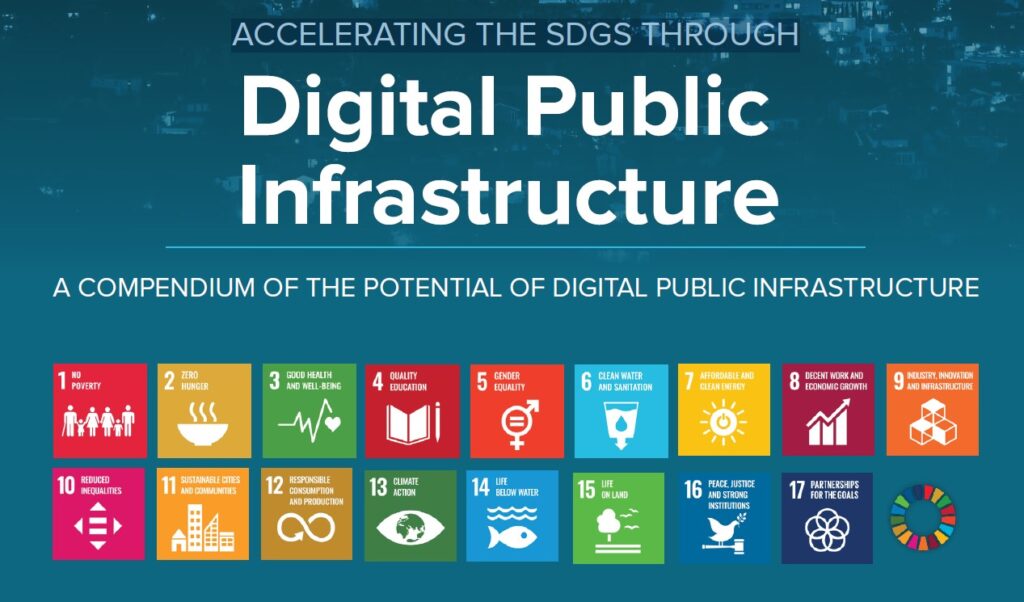
Digital public infrastructure is described as a set of shared digital systems that should be secure and interoperable, and can be built on open standards and specifications to deliver and provide equitable access to public and / or private services at societal scale and are governed by applicable legal frameworks and enabling rules to drive development, inclusion, innovation, trust, and competition and respect human rights and fundamental freedoms. As infrastructure, they cut
through the siloed approach of designing and implementing digital solutions with interoperable, society-scale programmes that shift innovation and competition to activities that take place atop it.
The scale and scope of digital transformation globally necessitates DPI approaches to maximize the opportunities to accelerate the SDGs and reduce the risks that digital technologies bring. The conventional approach is to create specific solutions to specific problems that work in specific contexts only. An alternative approach is to think ‘DPI’ – a combination of the right technology architecture, transparent, accountable, and participatory governance-enabling local digital ecosystems to drive sustainable innovation and scale.
With a DPI approach, countries can advance a range of development objectives and respond better during crisis. Although each piece of DPI can have impact on its own, the interaction of this infrastructure can unlock the most significant impacts in countries and across the SDGs.
DPI can accelerate global economic growth, support the transition to sustainable and green economies, and grow accessibility and public trust in institutions.
Source: G20, UNDP
